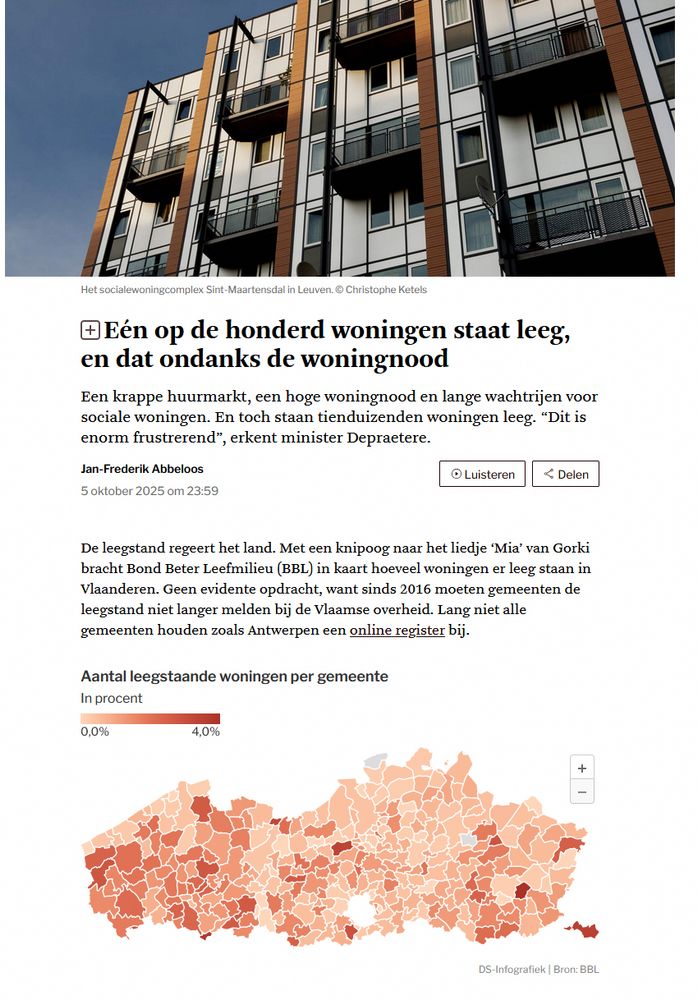
But Lomborg went on to cherry picking and often straight-up lying about energy in a way that must be conscious, and Pinker fancies himself knowledgeable about energy and climate change but isn't.

But Lomborg went on to cherry picking and often straight-up lying about energy in a way that must be conscious, and Pinker fancies himself knowledgeable about energy and climate change but isn't.
- elektriciteit €30-40 goedkoper
- aardgas €40-80 duurder www.standaard.be/politiek/hog...

- elektriciteit €30-40 goedkoper
- aardgas €40-80 duurder www.standaard.be/politiek/hog...


www.standaard.be/opinies/mia-...

www.standaard.be/opinies/mia-...
www.tijd.be/ondernemen/m...

www.tijd.be/ondernemen/m...
Als het beleidsmakers menens is met die laatste zaken, dan zullen ze ook ambitieus klimaat- en energiebeleid moeten voeren.
📰 Mijn interview met MagMetal, het e-magazine van ABVV-Metaal 👇
www.flipsnack.com/5D595799E8C/...

Als het beleidsmakers menens is met die laatste zaken, dan zullen ze ook ambitieus klimaat- en energiebeleid moeten voeren.
📰 Mijn interview met MagMetal, het e-magazine van ABVV-Metaal 👇
www.flipsnack.com/5D595799E8C/...

www.euronews.com/culture/2025...

www.euronews.com/culture/2025...
By far and away the best dietary decision you can make, for environmental, humanitarian and public health purposes, is to cut out animal products.
www.theguardian.com/commentisfre...

By far and away the best dietary decision you can make, for environmental, humanitarian and public health purposes, is to cut out animal products.
apache.be/2025/10/20/d...

apache.be/2025/10/20/d...
- synthetische vezels zijn over het algemeen wel degelijk duurzamer dan natuurlijke (bewijst ook onafhankelijk onderzoek)
- slow fashion is duurzamer dan fast fashion
Maar fast fashion aanpakken door duurzaamheid in twijfel te trekken is gewoon contraproductief.
www.fondspascaldecroos.org/nl/polyester...
- synthetische vezels zijn over het algemeen wel degelijk duurzamer dan natuurlijke (bewijst ook onafhankelijk onderzoek)
- slow fashion is duurzamer dan fast fashion
Maar fast fashion aanpakken door duurzaamheid in twijfel te trekken is gewoon contraproductief.
open.substack.com/pub/mliebrei...

open.substack.com/pub/mliebrei...
solarmagazine.nl/nieuws-zonne...

solarmagazine.nl/nieuws-zonne...
Dit dus 👇👇
www.parool.nl/nederland/fa...

Dit dus 👇👇
www.parool.nl/nederland/fa...
Metal oxide frameworks zijn een wetenschappelijk indrukwekkende ontwikkeling, maar de weg naar praktische toepassing is nog zeer onduidelijk.
Herinner je nog buckyballs of koolstofbuisjes (2x Nobelprijs), of perovskiet?
www.standaard.be/natuur-en-we...

Metal oxide frameworks zijn een wetenschappelijk indrukwekkende ontwikkeling, maar de weg naar praktische toepassing is nog zeer onduidelijk.
Herinner je nog buckyballs of koolstofbuisjes (2x Nobelprijs), of perovskiet?
www.standaard.be/natuur-en-we...




Is that a climate blessing or curse? Our global investigation has an answer.
🎁link
www.bloomberg.com/features/202...

Is that a climate blessing or curse? Our global investigation has an answer.
🎁link
www.bloomberg.com/features/202...
⚛️ With an LCOE of ~60-66€/MWh, Belgium's lifetime-extended nuclear power plants are among the cheapest sources of low-carbon energy
💸 With a guaranteed minimum price of 85-90€/MWh required for commercial operation, they are also among the most expensive 🧵
www.standaard.be/economie/ove...

⚛️ With an LCOE of ~60-66€/MWh, Belgium's lifetime-extended nuclear power plants are among the cheapest sources of low-carbon energy
💸 With a guaranteed minimum price of 85-90€/MWh required for commercial operation, they are also among the most expensive 🧵
www.standaard.be/economie/ove...

www.standaard.be/economie/ove...


